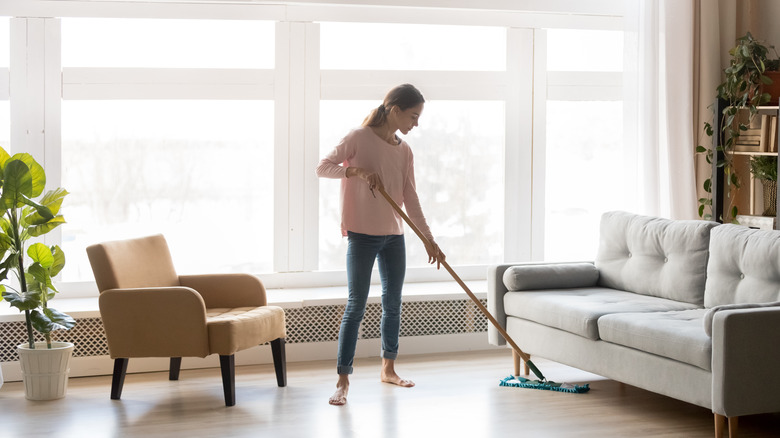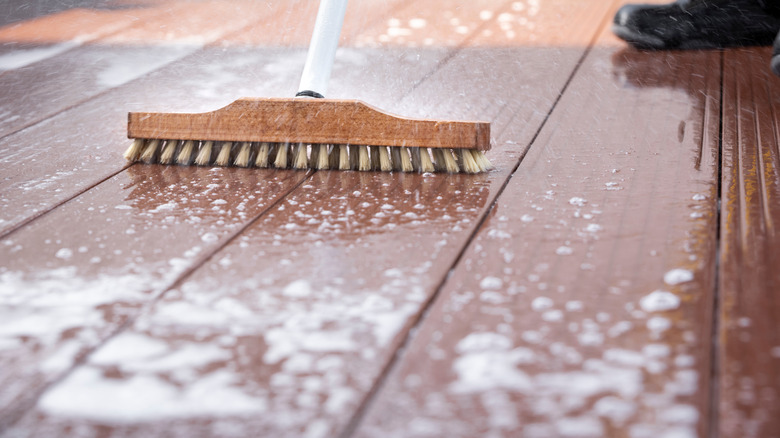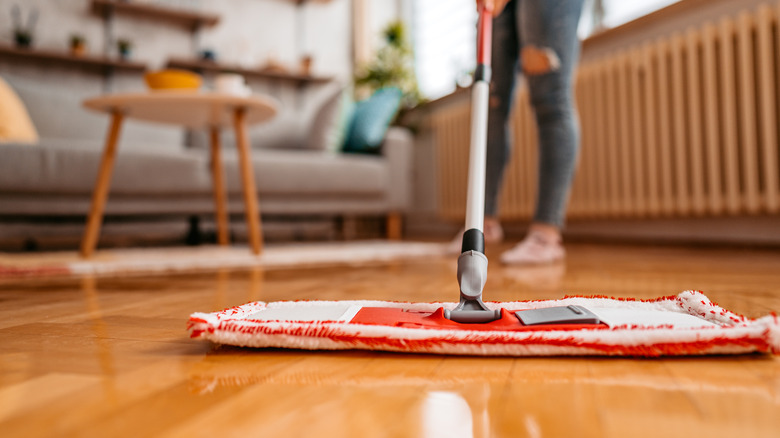What To Do About Salt Stains On Laminate Floors
When winter rolls around, you often find yourself facing an all-too-common and vexing problem: persistent, unsightly salt stains marring your laminate floors. These aggravating marks generally make their way into your living area, courtesy of the soles of boots and shoes worn in snowy or icy conditions. But fear not — a safe, eco-friendly solution may already be lurking in your kitchen pantry. We're talking about cleaning vinegar, a natural cleaner made up of water and up to 6% acetic acid. This liquid does more than just clean, it also serves as a disinfectant — the acetic acid in vinegar dissolves the salt crystals that form the stains, allowing for easy removal.
To tackle this issue effectively, it's crucial to understand the root cause of these salt stains. They're mainly the byproduct of deicing solutions liberally spread on roads, sidewalks, and runways to mitigate the icy hazards of winter. Armed with this knowledge, you can fully appreciate why using vinegar for cleaning is such a game-changer. It has a gentle, yet potent, cleaning action that not only lifts these irksome stains but does so without compromising the delicate surface of your laminate floors. Furthermore, using vinegar promotes a healthier indoor environment, eliminating the need for harsh chemicals while still achieving top-notch cleaning results. In essence, you're taking a holistic approach to home maintenance, caring for both the appearance and long-term integrity of your flooring.
Immediately remove the salt residue
Taking the right first steps is crucial when facing salt stains on your laminate floors. While known for their durability and ease of maintenance, laminate floors aren't entirely resistant to potential damage. The salt stains you see are more than just an unsightly blemish. They may puncture the protective finish that gives laminate flooring its resilience and sheen. Over time, if the salt stains aren't removed, they could affect the durability and look of the floor and cause permanent damage. Furthermore, any moisture that the wood collects could potentially permeate through the flooring, causing mold. So, if you want to keep your floors looking beautiful and lasting a long time, it's important to act fast.
However, before diving into the cleaning process, it's important to prep the area by removing any loose salt or other debris from the floor. Using a soft-bristle broom or a vacuum cleaner, sweep or vacuum away the dry salt and dirt. The benefits of this preparatory phase can't be overstated and serve dual purposes: It makes cleaning easier and prevents the coarse salt crystals from causing further abrasions on your floor as you clean. Essentially, it ensures that your floor is in the best possible condition to respond to your cleaning efforts, enhancing both the efficiency and effectiveness of your approach. At this point, you're ready to tackle the stains themselves.
How to use vinegar to clean salt stains on laminate floors
First, prepare a cleaning solution that packs a punch. Grab a mop bucket and fill it with one gallon of hot water. Add a third cup of vinegar for its stain-busting properties, and throw in a few drops of dish soap for good measure. The dish soap helps break down the salt, while the vinegar removes any grime. Now, soak your mop in this homemade cleaner, but remember, less is more when it comes to moisture and laminate floors. Carefully wring out your mop to ensure it's damp but not dripping. Excess water can seep into the laminate and cause warping, so ensure you're introducing enough moisture to lift the stain. With your mop prepared, swipe away at those salt stains, employing a gentle back-and-forth motion to break up the residue.
Your work isn't quite done once you've covered the stain-afflicted areas. Removing any remaining moisture from the laminate is crucial to preventing water damage and restoring its natural luster. To do this, take a dry microfiber cloth or a dry mop and pass it over the freshly cleaned floors. This not only dries the surface but also polishes it, restoring your floors to their original, sparkling condition. This way, you ensure that there's no lingering water that could cause damage later on, and you're also left with a gleaming, salt-free floor.


